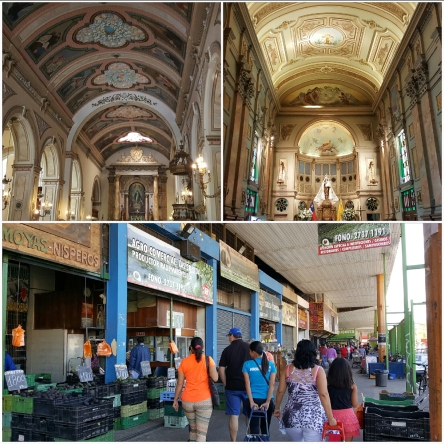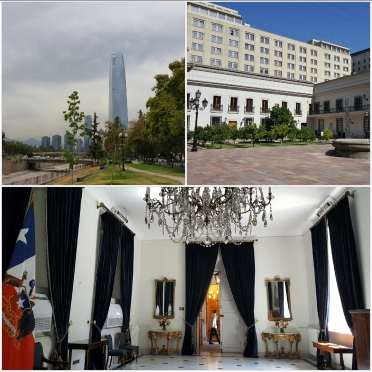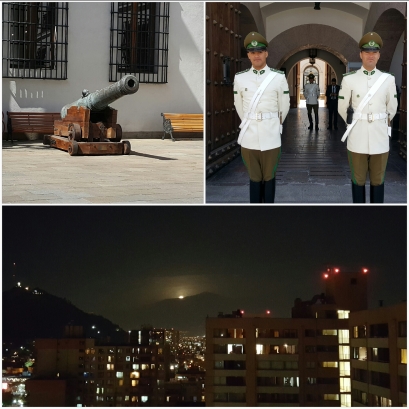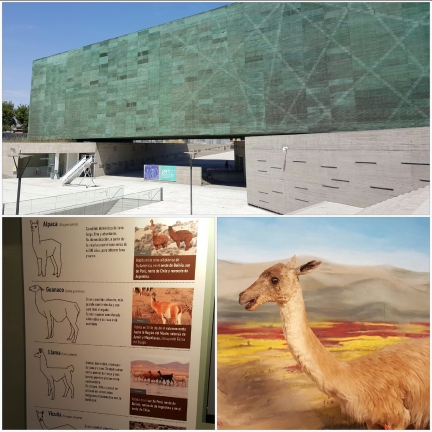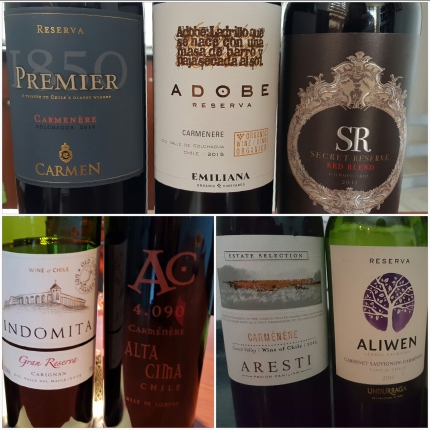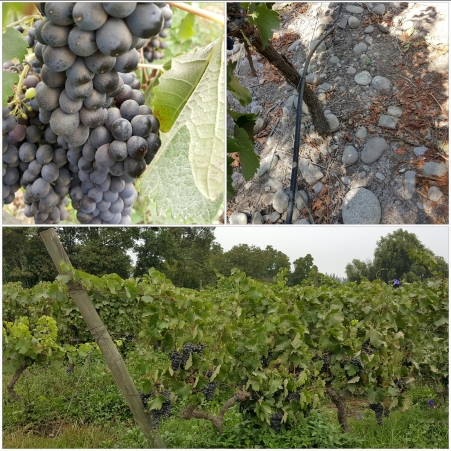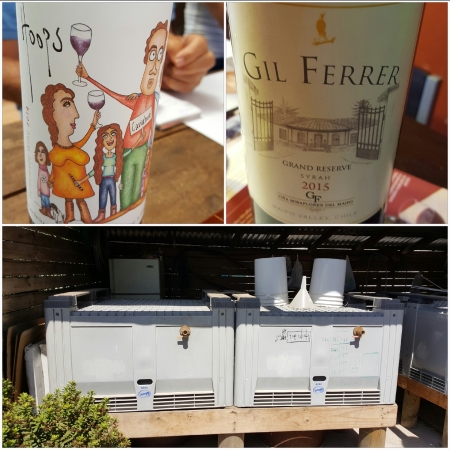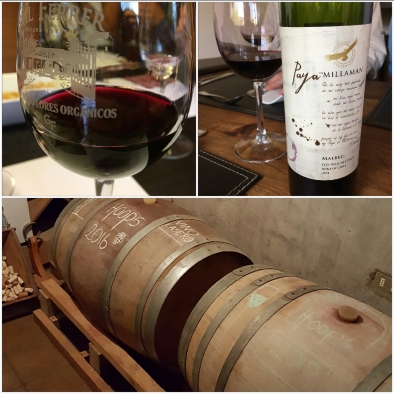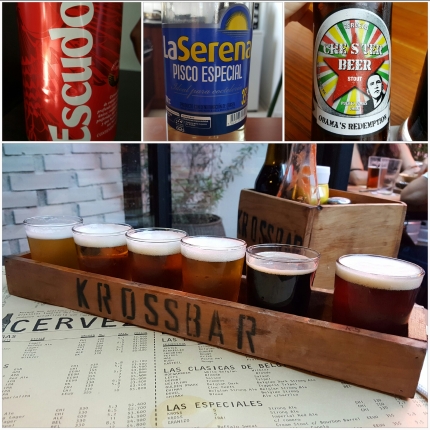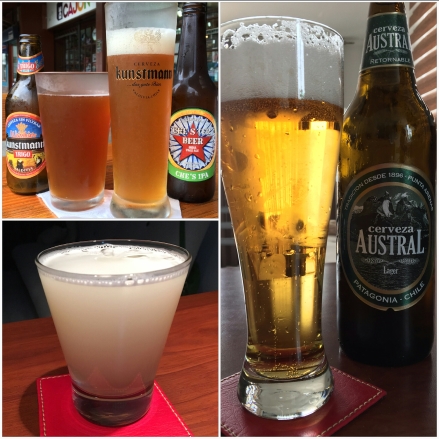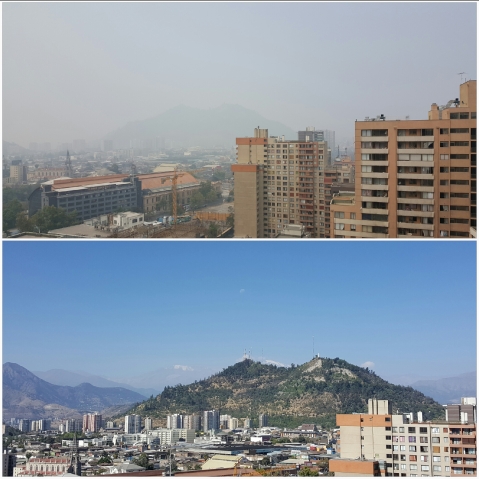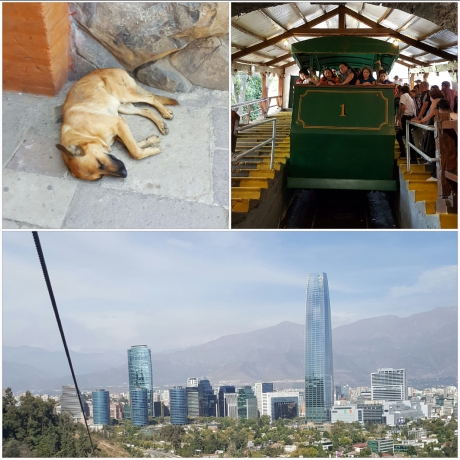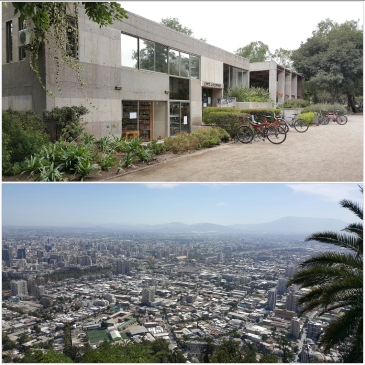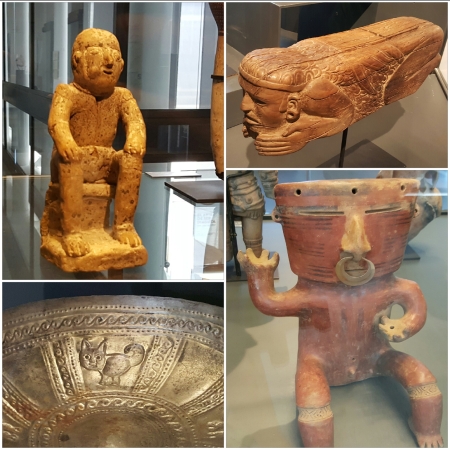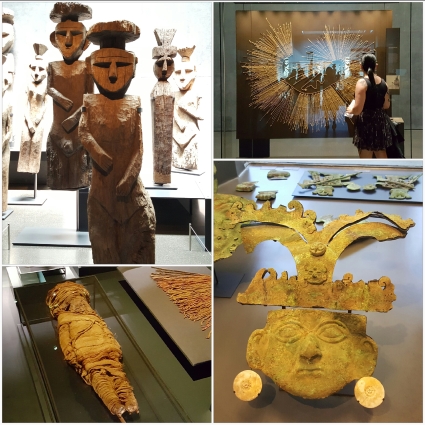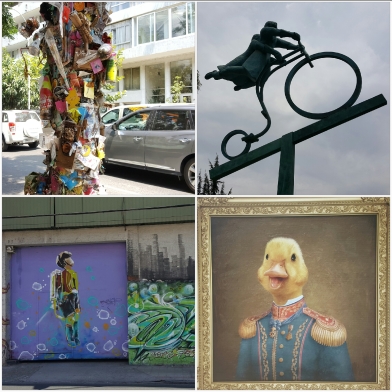We were thrilled to get off of the cruise ship so we could once again shop for our own ingredients and make our own meals. Based on the fruits and veggies that make their way to the US from Chile each winter, we expected big things. We made our way to Santiago’s markets our first afternoon in town and were not disappointed.
About a ten minute walk from our apartment was the Mercado Central, the most touristy of the three markets we frequented. It was full of seafood – both vendors and restaurants selling the fresh catch of the day. We splurged ordered ceviche and chupe de mariscos from a crowded sit-down place in the center of the building. It was delicious, of course, but much pricier than doing it ourselves. So for future meals we found a vendor we liked, Pescaderia Puerto Palmeras, and kept going back to them. We tried salmon (not as tasty as in the Pacific Northwest), congrio dorado (an eel that tends toward oily while cooking but is really tasty), tollo (white meat from a small shark), and reineta (seabream with firm meat that is good by itself or in tacos or in ceviche or in just about anything).


Right across the river from Mercado Central is the Mercado de Abastos Tirso, with produce and groceries on the main floor and eateries upstairs. And just a couple blocks further is the massive La Vega market where is seems possible to buy anything. There are hundreds of fruit vendors, bread stands, butchers, spice sellers, and hawkers shouting prices for dried grains, pickles, fish, dog food. It is a maze of delicious smells and crowded hallways. During our stay the tomatoes, blueberries, and strawberries were in season and incredibly cheap. Fresh produce arrives on trucks seemingly hourly. It’s possible to arrive and get vegetables and fruits that were picked the same morning and taken off the truck before your eyes. Outside are street empanadas and other hand-held cuisines from all around South America.

Even away from the markets, it’s easy to grab a snack of fruit or ice cream from vendors on the street. The local ice cream brand is Danky – weird word but yummy, heat-fighting products. Also readily available is Santiago’s traditional summer drink, mote con huesillo – dried peaches soaked overnight and combined with cooked wheat. In the 90 degree plus heat, it’s a refreshing way to cool down.
Restaurants in Santiago focus on fish and Peruvian cuisine. In fact, when we asked around, many locals claimed their favorite ‘Chilean’ food was Peruvian. Overall, Chilean cuisine falls somewhere between what we found in Peru and Argentina. There tends to be more spices, more limes, and less beef than in Buenos Aires but less fish and fewer stand out umami flavors than in Lima.

In Punta Arenas, different foods were needed to combat the chill and rainy weather. (The 1,300 miles that separate PA from Santiago completely change the climate and many of the local tastes.) Take away restaurants sell warmed sandwiches with gooey cheeses and empanadas with garlicky beef. Our favorite choripan was from Kiosco Roca (it seemed to be everyone else’s favorite as well). On the advice of a Santiago Uber driver we tried it with the leche con plantano (milk with bananas) – it went together better than I anticipated. Rather than fish, more focus was on red meats, though ceviche still rules at the downtown market.

Since we didn’t eat at any of the tourist-oriented restaurants in Punta Arenas, we didn’t have any of the lamb (though it looks amazing) or the king crab that is famous in the area. Instead, we cooked at home and made lots of rice and lentil dishes with gravy sauces and red meat. Punta Arenas is the kind of place that made me crave curl-up-on-the-couch-under-blanlets meals. Mulling wine also helped fight the chill and was another reason to try local drinks.

Like many places around Latin America I was left disappointed by the snacks. Chips boasting big and varied flavors (pizza! choripan!) never delivered. Queso-flavored Doritos were the best bet – they at least tasted like cheese and were good for dipping. One odd exception to the salty/savory snack set is the chirimoya alegre flavor that some corn puffs have. The fruit flavoring made it closer to a fruity breakfast cereal than an afternoon snack. It was a shame to be let down overall, but Punta Arenas is fortunate to have a duty-free import zone that receives shipments of goodies like ajvar, chocolates, and ratatouille mix from around the world. They seemed to have more variety than Santiago.

And finally, I have no explanation for the scores of individually pre-packaged hamburger patties that we found in every grocery store in Chile. Each packet had a different combination of meat cuts and spices and varied in size. We tried a couple, and they were mediocre and a little freezerburned. Maybe choice is very important for weekend grilling?
In any case, Santiago’s teeming produce and fish markets left a delicious lasting impression. La Vega set a high standard that other mercados will have a hard time following in the future. We came for wine and seafood and ended up happily eating just about everything we could get our hands on.
